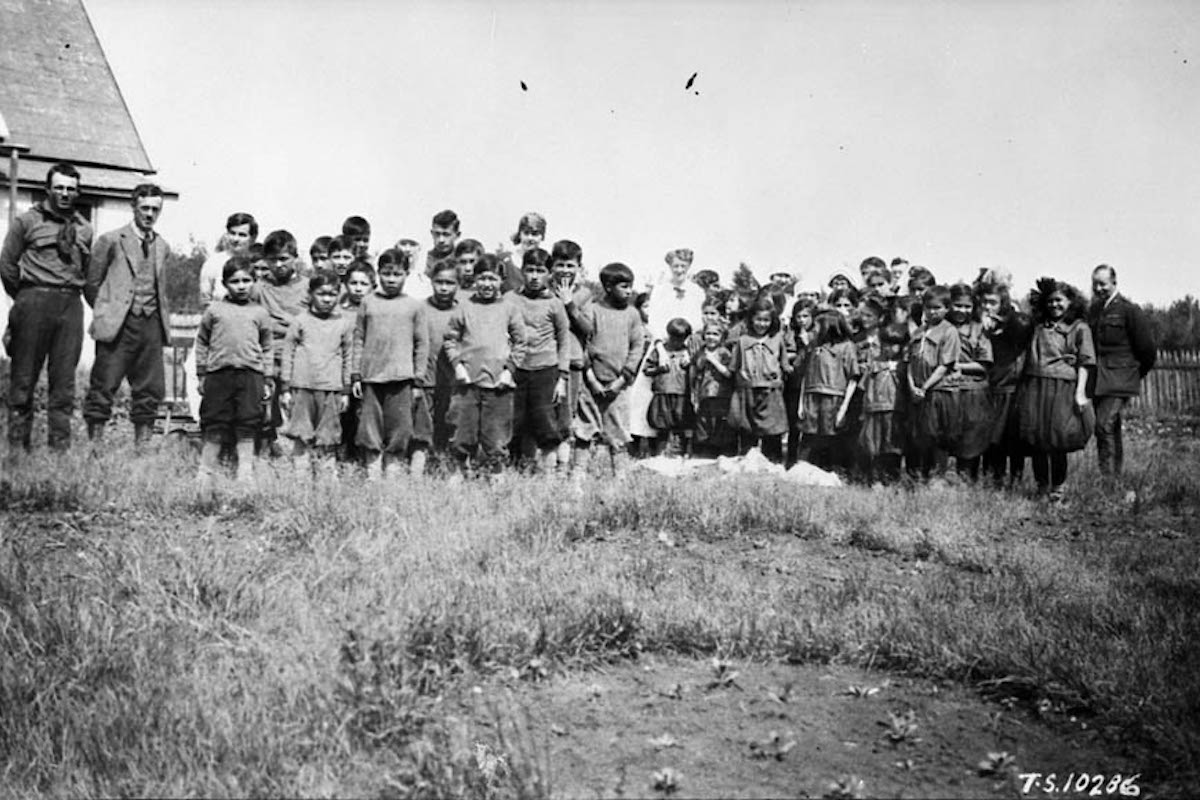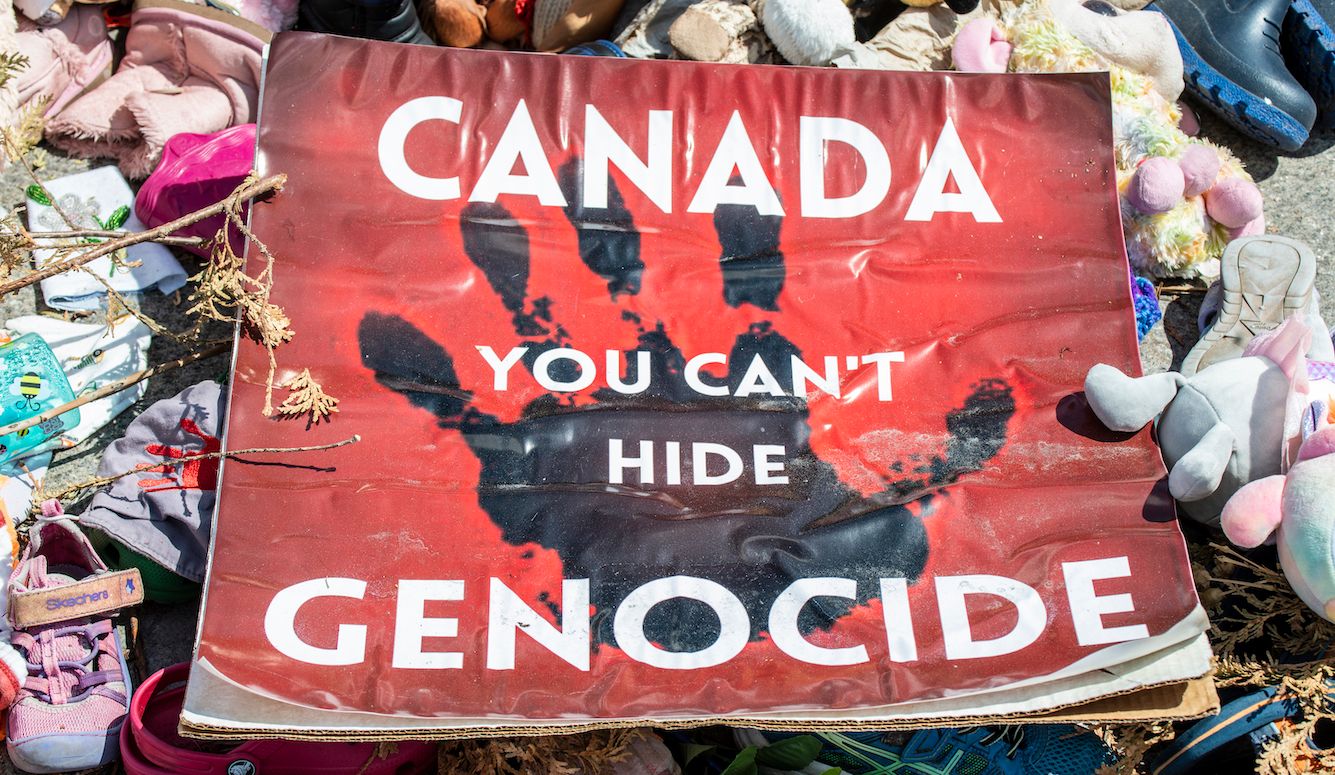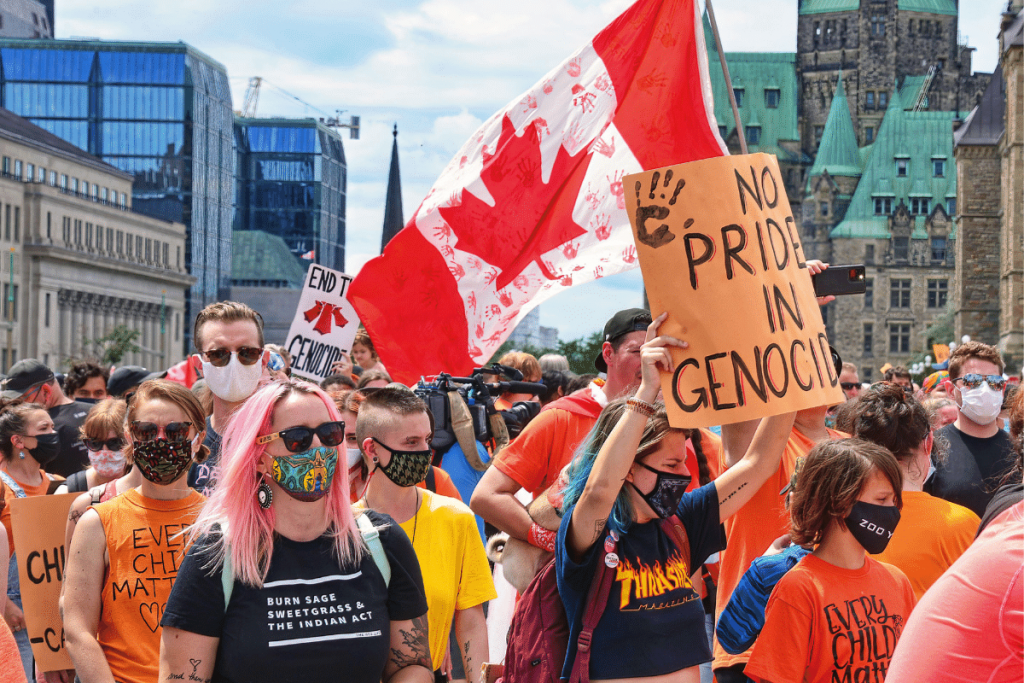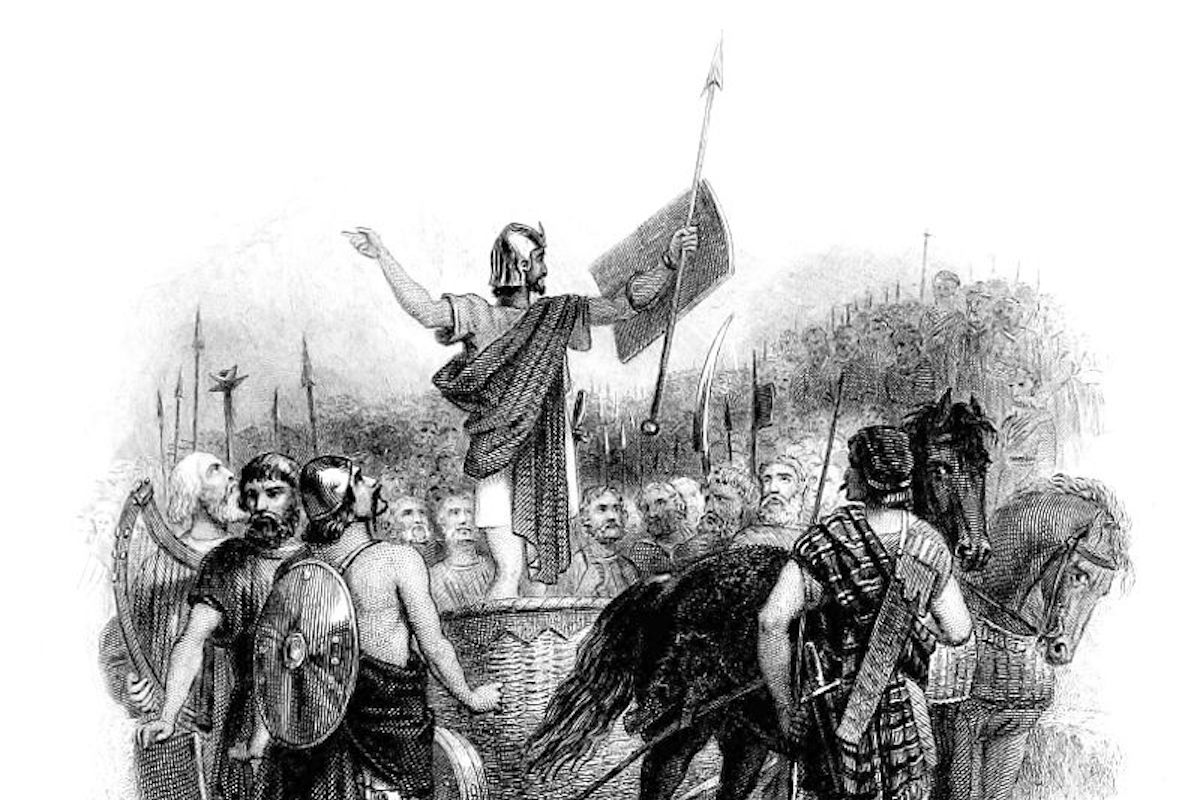Activism
The Canadian Historical Association’s Fake 'Consensus' on Canadian Genocide
The campaign to label Canada a genocide state isn’t an isolated phenomenon, but is playing out as part of a larger effort to destroy any publicly displayed symbol of national pride.

Last month, the Canadian Historical Association (CHA) issued a public “Canada Day Statement”—described as having been “unanimously approved” by the group’s governing council—declaring that “existing historical scholarship” makes it “abundantly clear” that Canada’s treatment of Indigenous peoples amounts to “genocide.” The authors also claimed that there is a “broad consensus” among historians on the existence of Canadian “genocidal intent” (also described elsewhere in the statement as “genocidal policies” and “genocidal systems”)—an alleged consensus that is “evidenced by the unanimous vote of our governing Council to make this Canada Day Statement.”
The authors went further by arguing that both federal and provincial governments in Canada “have worked, and arguably still work, towards the elimination of Indigenous peoples as both a distinct culture and physical group” (my emphasis); thereby suggesting that there is “arguably” an ongoing genocide going on, to this day, on Canadian soil.
The idea that Canada is currently waging a campaign of mass extermination against Indigenous people may sound like something emitted by Russian social-media bots or Chinese state media. But no, this is an official statement from the CHA, a body that describes itself as “the only organization representing the interests of all historians in Canada”—presumably including me.
In fact, there is no “broad consensus” for the proposition that Canadian authorities committed genocide, let alone for the completely bizarre idea that a genocide is unfolding on Canadian soil even as you read these words. And while many of us have become used to such plainly dilatory claims being circulated by individual Canadian academics in recent years, the CHA’s use of its institutional stature in this way was so shocking that it caused dozens of historians to affix their names to a letter of protest.
Notwithstanding what this (or any other) official body claims, the question of whether Canada committed genocide is not a settled issue among scholars. Canada is a relatively small country, home to only a small number of professional historians. And so even this modest-seeming collection of names suffices to disprove the CHA’s claim that it speaks for the entire profession. Moreover, many of those who have signed the letter are senior scholars giving voice to younger colleagues who (rightly) fear that speaking out publicly will hurt their careers.
I am not writing here to defend the actions of Canadian governments toward Indigenous populations. As most Canadians have known for decades, the policy of forcing Indigenous children to attend residential schools led to horrendous cases of sexual and physical abuse. There was also a long history in many schools of refusing to let children speak their native languages or continue their cultural traditions. These were assimilatory, underfunded institutions created and run by people who typically believed that they were doing Indigenous people a favour by “civilizing” them.
What I am addressing, rather, is (a) the question of whether these actions are correctly described with the word “genocide,” and (b) the CHA’s false claim that there is “broad consensus” on the answer to that question. As the letter of protest states:
The recent discovery of graves near former Indigenous residential schools is tragic evidence of what the Truth and Reconciliation Commission (TRC) documented in Volume 4 of its final report—a report that we encourage all Canadians to read. We also encourage further research into gravesites across Canada and support the completion of a register of children who died at these schools. Our commitment to interrogate the historical and ongoing legacies of residential schools and other forms of attempted assimilation is unshaken. However, the CHA exists to represent professional historians and, as such, has a duty to represent the ethics and values of historical scholarship. In making an announcement in support of a particular interpretation of history, and in insisting that there is only one valid interpretation, the CHA’s current leadership has fundamentally broken the norms and expectations of professional scholarship. With this coercive tactic, the CHA Council is acting as an activist organization and not as a professional body of scholars. This turn is unacceptable to us.
Historians are taught to approach their study of the past with humility, on the understanding that the emergence of new documents and perspectives may require us to revise our assessments. Moreover, even if an individual scholar might have strong opinions about a particular historical subject—having become certain that his or her interpretation represents the truth—the community of historians exists in a state of debate and disagreement. We are always aware that two historians sifting through the same archival box of documents can develop very different theories about what those documents mean.
It is true that there are some areas of history that might be fairly labelled as definitively “settled.” But these are few. And even in these cases, consensus typically arises organically, through the accumulated weight of scholarship—not, as in the case of the CHA’s Canada Day stunt, through ideologically charged public statements that seek to intimidate dissenting academics into silence.
The idea that Canada’s treatment of Indigenous peoples amounts to genocide was first aired prominently in the 1960s, by Indigenous activists. For decades, this was seen as a somewhat radical position. But in 2015, the above-cited Truth and Reconciliation Commission, which had been mandated by the federal government in 2008 with examining the history of Canada’s residential schools, reported that these schools had served as a “central element” in a policy of “cultural genocide.” This phrase had not been in wide usage, but quickly became part of mainstream parlance in activist, academic, government, and media circles.
Once the word “genocide” became commonly used in this context, there was a predictable movement to remove the “cultural” qualifier, and simply refer to all of it as flat-out genocide, full stop. This trend was bolstered by the 2019 final report of the National Inquiry into Murdered and Missing Indigenous Women and Girls, which had been created to investigate why Indigenous women are victimized by fatal violence and predation at a higher rate than other groups in Canadian society. The report authors declared that these MMIWG (as they are known) are the victims of an ongoing genocide. (The Inquiry even published a 43-page appendix report, titled A Legal Analysis of Genocide, devoted to justifying its usage of this term.) Prime Minister Justin Trudeau then announced that he, too, believed that MMIWG are victims of “genocide.” In a few short years, we went from talking about assimilation, to talking about cultural genocide, and then genocide full stop—not because we had discovered troves of new documents, but because we had implemented a new kind of moral politics.

James R. Miller, an eminent professor of history at the University of Saskatchewan and past president of the Canadian Historical Association, noted this process of verbal inflation in 2019. For decades, he had written about the interaction between Indigenous and non-Indigenous people in what is now Canada. As his university boasted of him in 2014, “his research and writings have played an essential role in bringing to light the history of the country’s [Indigenous] residential schools. He is a respected consultant to both government and First Nations organizations on treaty and residential school issues, as well as a regular commentator for national and international media.” His 2019 co-authored essay argued as follows:
A critical reader must ask whether “genocide” is truly the word for Canada’s Indigenous policies. The Genocide Convention defines it as acts “committed with intent to destroy, in whole or in part, a national, ethnical, racial or religious group, as such.” Both intent and action must be present for destructive state actions to be considered genocide. The problem in the Canadian case is that, while government policies were often terribly destructive to Indigenous people, those actions were never undertaken with the intent to destroy an Indigenous group. The goal of policies we now consider horrific—forced attendance at residential schools, limitations on mobility, reshaping economies and systems of governance, and suppressing languages and spiritual practices—was to control Indigenous people but not to eradicate them. Canada sought first to persuade and later to compel Indigenous peoples to live, work, worship, and govern themselves as Euro-Canadians did. If Canada had wanted to destroy them, it would not have devoted so much effort to trying to turn them into Euro-Canadians.
The last year has brought an escalation in the process of verbal inflation, thanks to the social-media-fueled copycat activist messaging that flourished in Canada following on the protests and riots that took place in the United States. This was situated within the larger spirit of anxiety-driven moral panic that flourished more generally during the COVID pandemic and the culture war surrounding Donald Trump’s presidency. A standard trope of Canadian media during this period has been to take some American event—such as the killing of George Floyd—as a basis for lecturing Canadians that such outrages typify our society as much as America’s.
While Canadian progressives once celebrated their (very real) cultural differences vis-à-vis the United States, our academics have recently dedicated themselves to importing wholesale the US race fixation into our policymaking. Universities, in particular, now commonly solicit diversity hires based on hard quotas for black and Indigenous scholars, policies that are justified with copy-and-paste application of American progressive intersectional boilerplate. Any challenge to such dogmas is dismissed (or even investigated) as a form of racism. Thus has it become routine for academics to casually impute any statistical disparity in group representation as evidence of “structural racism”; with words such as “genocide,” once reserved for the extermination of whole swathes of humanity, now applied to describe everyday life in our multicultural society.
In late May, a First Nation in British Columbia announced that it had used ground-penetrating radar to discover a burial site, containing at least 215 bodies, near a former residential school. This was followed by other First Nations announcing similar discoveries. The announcements were seized upon by pundits as yet more evidence of Canada’s allegedly genocidal status, and some local politicians, encouraged by the CBC, acceded to demands that Canada Day festivities be cancelled. It was in this moment, as the #CancelCanadaDay hashtag took off on social media, that the leadership of the Canadian Historical Association made its public statement.
It would be one thing if these historians were rendering an academic judgment on the basis of a body of new evidence. But as noted above, that isn’t what happened. Historians have known for years that thousands of Indigenous children died in residential schools, including through physical abuse, malnutrition, disease, and neglect. The Truth and Reconciliation Commission itself included a project aimed at recording and analyzing the identities of the tragically numerous children who were categorized as missing or who were buried in unmarked graves.
In sensationalized 2021 media accounts, Canadians were told that what had been discovered were “mass graves”—a term that brings to mind mass slaughter on the scale of Nazi war atrocities. But as Indigenous elders themselves pointed out in recent months, this is fake news: the grave site that had sparked national outrage was, as the community knew, a former cemetery. And the reason it is currently unmarked seems to be that the graves had been memorialized with wooden crosses—a widespread practice at the time—which disappeared over the decades. Moreover, it wasn’t just school attendees who’d been buried in some sites, but also others (including pre-school-aged children, who never would have set foot in the schools) and others from the nearby area.
Much more investigation is required to determine the full story of these gravesites. But the CHA was less interested in getting the facts than in presenting itself as being on board with a misleading narrative circulating in the lay media. And in the process, the organization compounded the spread of misinformation by creating its own false narrative about a “consensus” in the profession that doesn’t actually exist.

The campaign to label Canada a genocide state isn’t an isolated phenomenon, but is playing out as part of a larger effort to destroy any publicly displayed symbol of national pride. This has included a concerted effort to rename organizations, and remove or destroy statues, on the logic that their mere existence “creates an unsafe environment” for historically marginalized groups. Many of the actors demanding this purge are activists. But an unsettling number are professional historians. This includes Adele Perry at the University of Manitoba, a former president of the Canadian Historical Association. A few months ago, Perry co-authored an article linking the defence of John A. Macdonald, Canada’s first prime minister, with those who “serve white supremacy and protect the colonial status quo.” One of Perry’s University of Manitoba colleagues, Sean Carleton, denounces ideological opponents as being practitioners of “residential-school denialism,” a term that seems intended to put them in the same moral category as holocaust deniers.

Of course, the fact that North American university faculties are now dominated by progressive politics is widely known—having been richly documented by University of London professor Eric Kaufmann and others. But again, it is one thing to staff faculties with thinkers who are ideologically monolithic in their individual capacities, and another thing for a group of these scholars to make their bias plain in an institutional capacity, as the CHA has done. This crosses a line.
A significant number of progressive scholars likely believe that viewpoint diversity is important in their respective fields. But their demonstrated commitment to this principle is limited, because they have also been instructed to believe they have a political responsibility to protect certain groups from “harm”—an ever-expanding term that now is taken, in the halls of academia, to include the articulation of unfashionable opinions.
In the context of Canada’s treatment of Indigenous peoples, this perceived duty of ideological conformity now is linked with the idea (often described as “reconciliation”) that individual Canadians have an urgent moral responsibility to atone for past colonial misdeeds. And it is not surprising that many scholars have persuaded themselves that this quasi-religious mission to atone for sin must be placed above their commitment to scholarly methods and principles. To do otherwise, they’ve been instructed, is to perpetrate “harm.”
But once we accept the precedent that the normal rules of debate and truth-seeking may be suspended as a means to protect this or that harmed group, the list of potential taboos becomes endless. What work will there remain for members of the CHA, one is left to wonder, when all of history has been settled by “consensus”?






